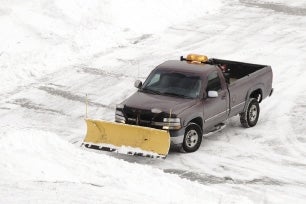During the winter months, snow removal can be a great source of revenue for small contractors, as well as an added expense for business owners who need to keep their parking lots clear. However, there are risks to performing this duty for both the customer and the contractor. That’s why both buyer and provider should have clearly worded snow-removal contracts.
A clearly worded contract helps protect both sides by outlining the scope of the work that is to be performed. Using clear service contracts and maintaining snow removal and customer logs is an effective way to manage the performance of your business and your reputation.
That’s why your legal counsel should review a proposed contract to ensure these seven items are covered:
• The scope of the work to be performed;
• Clear definitions of specific areas to be cleared;
• Identification of property defects;
• Definition of the timing of the service, such as how soon after a snowstorm the property must be cleared;
• Inclusion of a property damage liability limitation or “hold harmless” clause that limits or waives liability for damage to portions of the property not adequately marked by the owner as areas not to be plowed (or have snow piled on) as well as for damage to unforeseen objects hidden under snow;
• A requirement that the property owner report any property damage to the contractor within a specific time frame; and
• Appropriate indemnification or “hold harmless” provisions from the property owner for losses not caused by a contractor’s negligence.
For contractors, having best practices in place for employees while they’re on the job is helpful. These physical controls should be readily available and reinforced by management to help minimize the potential for loss. Here are five suggestions for contractors:
• View areas and take pictures of a property prior to bad weather for your files. Mark objects that may be damaged or that could damage a plow. Also, have cameras in vehicles to take pictures after a job’s completion;
• Install proper lighting on vehicles, including strobes and strong backup lights;
• Have caution cones and tape in your vehicles to use for warnings or unexpected circumstances should an area need to be closed off;
• Place snow piles in areas away from pedestrian traffic and where driving in reverse can be minimized. Also, pay attention to areas of water drainage to prevent black ice; and
• Rest drivers who have worked more than 14 hours.
Also, in the event of a dispute with a customer, maintaining a snow removal log that records the dates and times a service was conducted can serve as a strong risk management tool. For contractors who perform some of the work, all subcontractors should keep the same type of log and send it to the contractor upon completion of the work.
Remember that, as a business owner, your reputation is also exposed by the actions of others. Stay involved and do what’s reasonable and prudent to ensure the safety of your customers and employees.
____________________
Jim Sievert is an assistant vice president for Acadia Insurance, a commercial property and casualty insurer with offices throughout the Northeast, including Marlborough.
Read more

